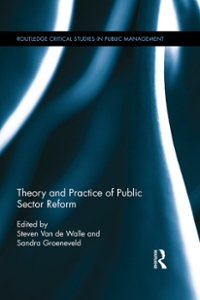
1. True I False! Uncertain - Explain your answer in a sentence when necessary (1.5 marks each} 1. Kumar's annual income in 2015 was $400 and 34m in 2014, Sachs says Kumar is trapped in vicious cycle of poverty? 2. Poverty is not just a lack of money, it is not having the capability to realize one's full potential as a human being. 3. Income per capita is one of the traditional measures of economic development. 4. Poor people usually spend larger share of their budget on food. 5. According to Deaton and Subramanian (1996}, expenditure elasticity of food is inelastic. 6. A lower value of Gini coefcient means that income distribution in the economy is highly equal. 7. Economic development occurs when the standard of living of a large majority of the population rises, including both income and other dimensions like health and literacy. B. Family size is larger in compared to developed countries. 9. There is imperfect correlation between per capita income and happiness: people could be poor, but happy; rich but unhappy. III}. Jeffrey Sachs believes in L-shape curve which shows relationship between present and future's income. 1 l, The ltiini coefcient provides a measure of level of relative poverty. 12. The essence of EngePs law is that as family incomes rise as the proportion of income spent on food declines 13. 12. The essence of Engel's law is that as family incomes rise as the expenditure on food declines. 14.1f Lorenz curves cross, we say there is less inequality. 15. According to Simon anneis, the relationship between GN? per capita and inequality in the distribution of income can he expressed as a strictly increasing relationship 16. While calculating the PGI, all households whose income is above the poverty line are also considered. II. Solve or explain the following [2 marks each} 1. If the distribution of income in country (3 is {1, 2, 2, 3, 5) and the poverty line is 3, the headcount measure tells us what percentage of the population is in poverty 2. Imagine there are 5 workers in an economy and initially all the workers work in the traditional sector at a wage equal to $10 {call this initial year, year IIll}. Each year, one worker migrates from the traditional sector to the modern sector where wages are equal to $21}. Assimiing that the number of workers remains constant, and then in year 5 all workers are in the modern sector. a. In period 5, how much will be the Gini coefcient of inequality? b. As migration takes place the Gini coefcient of income inequality increases, decreases or remain constant 3. World Bank data show that in 1995, the poorest 20% of households accounted for 7.5% of household income in Niger, the next 20% of households accounted for 11.8% of income, the middle 20% accounted for 15.5% of income, the second richest 20% accounted for 21.1% of income, and the top 20% accounted for 44.1% of income. What was the cumulative income share of the bottom 60% of households in Niger?4. Figures a, and b represent Lorenz curves for the distribution of income in various countries. Which curve corresponds most closely to the data given for Niger in the question above? Figure a 100 cumulative 80 percent of income 60 40 20 0 0 20 40 60 80 100 cumulative percent of households Figure b 100 cumulative 80 percent of income 60 40 20 0 20 40 60 80 100 cumulative percent of households2. Purchasing Power Parity (a) Consider the following hypothetical situation. GDP/capita Cost of living - basket: United States 30,000 dollar 10 dollar India 15,000 rupees 15 rupees Assume the current exchange rate is 1 dollar = 10 rupee. Compare the GDP/capita numbers of the USA and India using the exchange rate method and using the PPP method using the above numbers. Which method would you prefer, and why? 3. Regarding the debate on whether "Growth is good for the poor" describe the empirical evidence on the benefits of growth on poverty reduction in the framework of Dollar and Kraay graph. Do you remember the X and Y axes. If growth-poverty coefficient is 1.2, then what is the interpretation of this coefficient? 4. Define Human Development Index. Who first constructed it and in which year? How do you estimate HDI- outline the three components? Formula for calculating the dimension index: (actual value - minimum value)/ (maximum value - minimum value) Indicators Observed maximum minimum India Life expectancy 84.6 30.6 64.6 Education index 0.971 10 0.596 GNP per capita (PPP $) |90000 1000 2000 HDI: ?5. Is the headcount ratio or the poverty gap index more sensitive to small changes in the poverty line? How could you make the poverty gap index more sensitive to income transfers from the poorest to the relatively less poor. 6. Describe atleast five characteristics of "the economic lives of poor". 7. Why geometric mean is preferred over arithmetic mean in HDI estimation? Explain using an example













